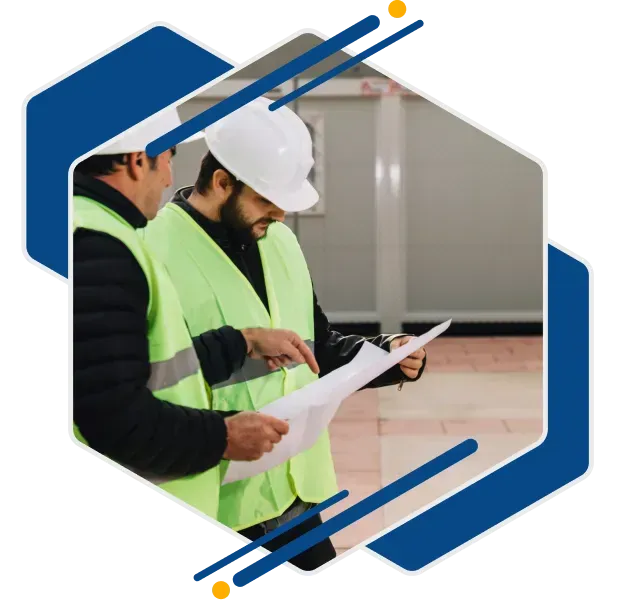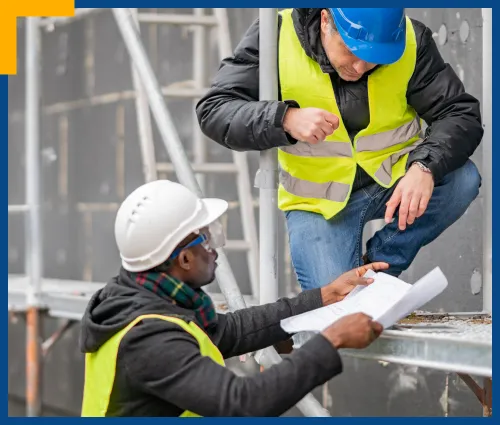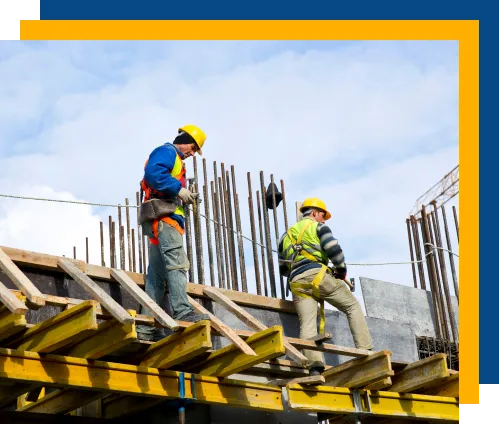Now Offering Spanish Safety Training!

Now Offering Spanish Safety Training!
Construction Safety
Competent Person Training
FSDAVCFEBFEVSDDVFSD
FSDAVCFEBFEVSDDVFSD
FSDAVCFEBFEVSDDVFSD
Construction Safety - Competent Person Training
Competent Training Programs for the Construction Industry

Competent Person training is essential for identifying hazards and maintaining safety on construction sites. It equips individuals with skills to manage safety, assess risks, and ensure compliance with OSHA standards. By focusing on real-world scenarios, participants become adept at responding to various site conditions and emergencies.
This training covers key topics like fall protection, trench safety, and hazard communication, ensuring site-specific understanding. Regular sessions keep workers updated on regulations, fostering a culture of safety. With proper training, workers not only follow safety protocols but also play an active role in preventing incidents on-site.

Key Elements of Competent Person Training
Competent Person training goes beyond fundamental safety knowledge. It focuses on identifying and managing specific site hazards, such as unstable ground, electrical risks, and fall hazards. Trainees are taught to evaluate work environments thoroughly, spotting potential risks before they lead to accidents. This proactive approach ensures safety measures are implemented promptly, minimizing risks on construction sites.
The program combines hands-on exercises with classroom instruction to reinforce critical safety protocols and enhance decision-making skills. Participants engage in real-world simulations to practice what they’ve learned. Integrating train-the-trainer programs allows trainees to effectively teach others, broadening the reach of safety awareness across teams and ensuring consistent safety practices.
Frequent assessments throughout the training track progress and address any knowledge gaps. Trainers offer immediate feedback, allowing workers to adjust quickly to evolving site conditions. This adaptable strategy keeps safety practices up-to-date, aligns with OSHA guidelines, and ensures compliance at all stages of construction projects.
Practical Construction Safety with Real-World Training

Competent Person training is most effective when it reflects real-world scenarios. Workers engage in practical exercises that simulate site-specific hazards, such as trench collapses or confined space entry risks. These exercises help trainees build confidence in recognizing and addressing safety concerns swiftly. Organizing for safety is emphasized throughout the training, promoting structured safety management that aligns with OSHA requirements.
In addition to hands-on activities, the training includes detailed discussions on OSHA standards, focusing on rules specific to construction. Trainees learn how to interpret regulations and apply them in daily work routines. For example, addressing scaffolding risks requires adherence to OSHA guidelines for stability and load capacity. Participants are also trained to document safety measures accurately, supporting compliance and reducing risks on-site.

Safety evaluations extend beyond the initial training phase to support ongoing compliance. Regular feedback sessions allow workers to pinpoint weaknesses in current safety measures and suggest adjustments. Trainers work closely with participants to refine protocols based on site-specific changes or new OSHA updates. Safety program development is integrated into this continuous process, ensuring that safety practices remain effective and adaptable to evolving conditions. This approach not only reinforces safety standards but also aligns them with the latest regulations.
Engaging workers in open discussions further promotes a culture of safety accountability. Employees are encouraged to share insights, voice concerns, and actively participate in refining safety protocols. This ongoing collaboration builds trust and reinforces a shared commitment to safety, resulting in more practical safety measures. By consistently addressing real-world challenges, workers can better anticipate hazards, adhere to updated safety guidelines, and create a safer construction site environment for everyone involved.
Frequently Asked Questions
Frequently Asked Questions
What exactly is Competent Person Training, and why is it important for my construction company?
Competent Person Training is a specialized program designed to qualify individuals to identify workplace hazards and take corrective actions on construction sites. It's vital for complying with OSHA requirements and ensuring the safety of your workforce by addressing areas like fall protection, excavation safety, and scaffolding.
What topics are covered in Nain and Associates' Competent Person Training?
Our training program encompasses key safety areas relevant to construction sites, including fall protection, excavation safety, scaffolding safety, and the correct use of personal protective equipment. The aim is to equip your designated competent persons with comprehensive knowledge and skills for maintaining safety standards.
How does having trained competent persons on site benefit my construction projects?
Training competent persons enhances on-site safety culture, reduces the risk of accidents, ensures regulatory compliance, and protects your workforce. This proactive safety management approach also helps maintain project timelines by minimizing disruptions caused by workplace incidents.
Can Nain and Associates customize the Competent Person Training to specific needs of my construction sites?
Yes, our program is tailored to meet the unique challenges and specific hazards of your construction sites. We provide practical, hands-on training that prepares participants to effectively assess and mitigate risks, ensuring that safety practices are effectively implemented at every operation level.
How do we get started with Competent Person Training from Nain and Associates for our team?
To initiate Competent Person Training for your team, contact Nain and Associates to discuss your project's specific needs. We will assess your requirements and develop a customized training plan to equip your employees with the necessary skills and knowledge to uphold safety and compliance on your construction sites.
Strengthening On-site Safety Through Competent Training
Ensuring safety requires a consistent focus on practical training and real-world application. Competent Person training emphasizes hands-on exercises to help workers effectively identify and manage hazards on construction sites. Trainees are equipped to make informed safety decisions, reducing risks across diverse work environments.
Routine updates to training materials are essential to keep safety protocols aligned with evolving site conditions. Integrating organizing for safety strategies during training refreshes workers’ knowledge and ensures adherence to current OSHA guidelines, further promoting safety consistency.
Feedback loops play a critical role in maintaining effective safety practices. Workers should be encouraged to suggest improvements, share observations, and engage in open dialogue during training sessions. This interaction supports continuous development, making safety measures more adaptable and effective.


Ongoing safety assessments are essential for adapting to evolving site challenges. Regular audits, combined with detailed employee feedback, enable teams to identify and address safety gaps swiftly. This proactive approach helps ensure that safety measures remain current, aligned with regulatory updates, and tailored to real-world conditions. By actively engaging workers in the review process, organizations can enhance compliance and minimize site risks. Open communication fosters trust, encouraging employees to report hazards and suggest improvements, ultimately supporting a culture of shared responsibility and continuous safety improvement across all job sites.
Competent Safety Trainers for Construction Sites
Developing effective safety skills among workers is a continuous effort that extends beyond initial training sessions. It requires consistent reinforcement and real-world application to maintain high compliance standards. By integrating ongoing assessments and feedback loops, workers can keep their skills sharp and adaptable to new safety challenges. Regular refresher courses reinforce key safety principles, making sure that protocols are not just understood but are also implemented daily.
Engaging safety experts can enhance the effectiveness of these training programs. Experts can tailor sessions to address specific site conditions, such as equipment handling, fall protection, or confined space entry. This targeted approach helps workers understand the unique risks of their work environment, improving their ability to respond to hazards swiftly and effectively. When training is relevant and customized, it becomes more engaging, ensuring better retention and adherence to safety protocols.
To maintain a strong safety culture, it's important to promote active participation from all team members. Encouraging workers to share their experiences and provide input on training methods helps identify areas for improvement. When employees feel that their feedback is valued, they are more likely to embrace safety measures. This collaborative approach not only improves safety awareness but also fosters a sense of responsibility across the workforce, leading to a safer and more compliant construction site overall.
Have Questions About Our Services?
Contact us to learn more today!
Have Questions About Our Services?
Contact us to learn more today!
Design By: Customers.Plus
© 2025 | Nain & Associates LLC




